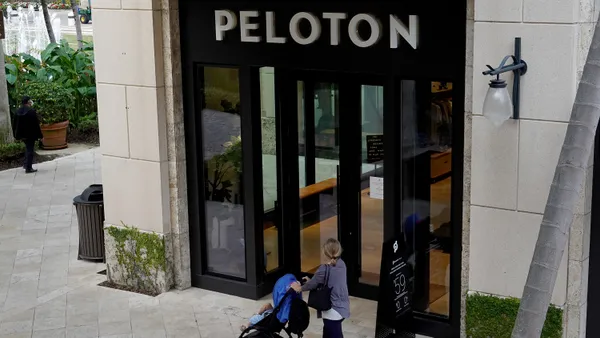Dive Brief:
-
Beginning April 19, Wal-Mart will offer discounts on some items sold online and picked up in stores, the president and CEO of its U.S. e-commerce unit Marc Lore wrote in a company blog post Wednesday.
-
The so-called “Pickup Discount” will be available on about 10,000 items at first, expanding to a million by the end of June, Lore said. Items eligible for the discount will be marked as such online, and the discount will vary. Pickup Discount is only available for online orders picked up at Wal-Mart stores within the lower 48 states.
-
Lore — who joined Wal-Mart last year when it acquired his e-commerce startup Jet for a record-breaking $3.3 billion — said Wal-Mart’s fleet of more than 6,700 trucks enables the retailer to deliver products from fulfillment centers to stores cheaply and efficiently to stores, and that it is passing on the last-mile savings to its e-commerce customers.
Dive Insight:
Wal-Mart is probably the most efficient distributor of retail goods in the world. The idea of passing on some of that efficiency to customers in the form of extra savings for those who choose to pick up online orders in stores is a sort of offline version of the philosophies Lore introduced at Jet, which differentiated its brand by allowing customers to add on savings through a series of choices, like slower ship times or forgoing returns.
“With Pickup Discount, we are beginning to take the ethos behind Jet’s Smart Cart and marrying it with Walmart’s operational efficiency to bring price transparency to life at Walmart.com,” Lore wrote. “We already offer great prices online. We do that every day. Offering a discount on Pickup demonstrates how we can take that to the next level by operating more efficiently and removing costs from the system to give customers even more ways to save.”
Moody’s lead retail analyst Charlie O’Shea praised the announcement in an email to Retail Dive. “Wal-Mart’s announcement that it will begin offering customers discounts to pick-up online orders in-store, which will utilize the Jet.com pricing algorithm, is another example of a retailer leveraging its physical stores to provide consumers with more options to receive online orders quickly, and we view this move positively,” O’Shea said. “Wal-Mart has been stepping up its online game since the acquisition of Jet.com, including making small, but tactical, acquisitions of online retailers to further leverage its improving platform, and this discount offering continues that trend.”
Still, it’s a somewhat curious decision, considering that by far the majority of Wal-Mart’s customers still shop in its stores. While the new policy can be seen as a boon to its e-commerce efforts — a segment the retailer has been assertively moving to expand, not least by paying more than $3 billion for Jet in the first place — it also means its brick-and-mortar customers are paying more, something that has bedeviled Wal-Mart in the past. For years, shoppers expressed frustration that Wal-Mart’s price-matching policy applied only against local competitors within the vicinity of its physical stores, and that shoppers had to buy products online in order to obtain Wal-Mart’s web prices. In 2014, president and CEO of Wal-Mart U.S. Greg Foran finally reversed that policy, allowing online price matching in all stores — a policy that extended to the retailer's own online prices.
In another blog post Wednesday, Mark Ibbotson, executive vice president of central operations for Wal-Mart U.S., touted the expansion of the retailer’s grocery pickup and “Pickup Today” services, including additional staffing, mobile capabilities and tests of a “Pickup Tower,” which the company began trialing at a Bentonville, AR location late last year.
Ibbotson described the Pickup Tower as “much like a high-tech vending machine” for online orders, allowing pick up of items in less than a minute by scanning a bar code sent to a user’s smartphone. “The pilot phase has been so successful we’re expanding it to other locations across the country,” he writes. “We’re also testing other pickup options and locations that quickly get items to you in ways that are most convenient.”
But these assertive actions to move the needle on e-commerce are toying with Wal-Mart’s core strengths, asserts retail analyst Nick Egelanian, president of retail development consultants SiteWorks International.
“The internet couldn’t possibly be hurting Wal-Mart,” Egelanian told Retail Dive earlier this year. “Go to any Wal-Mart and look at anyone shopping at Wal-Mart and you’ll find very few [Amazon] Prime customers. What Amazon is really good at is promotion and distribution — they can’t make money. Look at the core competencies of Wal-Mart — there’s no catching up to Amazon. There is no way there is a pro forma that could exist on that Wal-Mart campus. There is no path to profit in e-commerce for Wal-Mart as sure as I am sitting here.”














